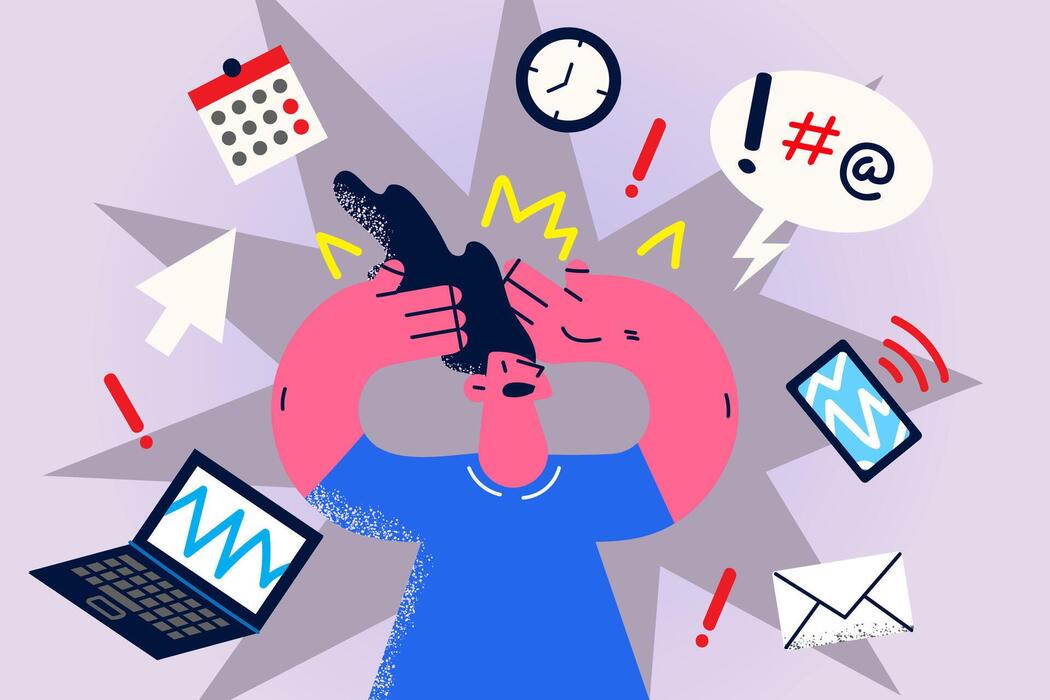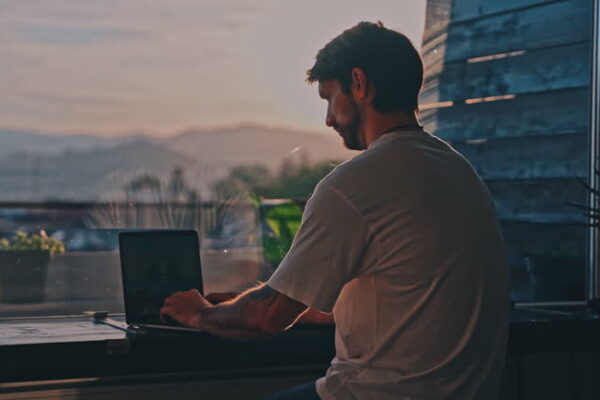
Beyond the Hustle: A Comprehensive Guide to Sustainable Productivity and Work-Life Balance
The Modern Productivity Paradox: Why Being Busy Isn’t the Same as Being Effective
In today’s hyper-connected world, the pressure to be constantly “on” is immense. We juggle overflowing inboxes, back-to-back virtual meetings, and the endless scroll of social media, all while striving for professional success and personal fulfillment. This relentless pace has given rise to a “hustle culture” that glorifies burnout as a badge of honor. However, a growing body of evidence and a shift in cultural perspective are revealing a crucial truth: busyness does not equal productivity. True productivity isn’t about cramming more tasks into your day; it’s about achieving meaningful results with intention, focus, and a sustainable pace. It’s a cornerstone of effective Personal Development and Self-Improvement.
This guide moves beyond simplistic to-do lists to offer a holistic framework for mastering your time and energy. We’ll explore powerful strategic frameworks, the critical role of well-being, and how to create an environment that fosters deep work. By understanding these principles, you can reclaim your focus, reduce stress, and build a system that supports not just your career goals, but also a rich, balanced life. This is more than just a collection of Productivity Tips; it’s a roadmap to achieving a healthier Work-Life Balance, especially in the era of widespread Remote Work.
Section 1: The Foundation – Crafting Your Productivity Mindset and Environment
Before diving into specific techniques, it’s essential to build a solid foundation. Your mindset and physical environment are the invisible forces that either sabotage or support your efforts. Without addressing these, even the best productivity systems will fail. This foundational work involves a conscious shift away from reactive busyness towards proactive, intentional action.
Redefining Productivity: From Volume to Value
The first step is to challenge the outdated notion that productivity is measured by hours worked or tasks completed. Sustainable productivity focuses on value and impact. Ask yourself: “Which activities will move the needle most significantly on my most important goals?” This mindset shift is crucial for Stress Management and preventing burnout. Instead of starting your day with a frantic check of emails (a reactive habit), you begin by identifying your one to three “Most Important Tasks” (MITs) that align with your long-term objectives. This approach ensures your best energy is spent on high-impact work, not just on fighting fires. It’s a core principle of good Career Advice that prioritizes strategic contribution over mere activity.
Your Environment: The Sanctuary for Deep Work
Your physical and digital surroundings have a profound impact on your ability to concentrate. A cluttered desk or a desktop littered with icons creates cognitive drag, constantly pulling at your attention. Embracing principles from Minimalism and Home Organization can dramatically improve focus.
- Physical Space: Your workspace should be dedicated, if possible, and optimized for focus. This touches on Home Improvement and Interior Design; think about ergonomics, good lighting, and minimizing distractions. A simple act of Decluttering your desk at the end of each day can create a clean slate for the next morning. For those interested in Sustainable Living, choose office furniture made from reclaimed materials or invest in energy-efficient lighting.
- Digital Space: Your digital environment is just as important. Turn off non-essential notifications on your phone and computer. Use tools to block distracting websites during work blocks. Organize your digital files into a logical system so you aren’t wasting time searching for documents. This digital tidiness is a form of Organization Tips for the modern age.
By consciously designing your mindset and environment, you create the necessary preconditions for high-level performance and improved Mental Health.
Section 2: Strategic Frameworks for Prioritization and Execution
With a solid foundation in place, you can now implement powerful frameworks to manage your tasks and time effectively. These are not rigid rules but flexible systems to help you make better decisions about where to direct your focus. The goal is to work smarter, not harder.

The Eisenhower Matrix: Separating the Urgent from the Important
Developed by Dwight D. Eisenhower, this simple yet profound tool helps you categorize tasks based on two criteria: urgency and importance. This prevents the “urgency trap,” where we spend all day on tasks that feel critical but don’t contribute to our main goals.
The matrix is divided into four quadrants:
- Urgent & Important (Do First): Crises, pressing deadlines, critical problems. Handle these immediately.
- Not Urgent & Important (Schedule): Strategic planning, relationship building, new opportunities, personal development. This is where true growth happens. Proactively schedule time for these tasks.
- Urgent & Not Important (Delegate): Some meetings, many interruptions, routine tasks. Delegate these where possible or minimize them.
- Not Urgent & Not Important (Eliminate): Time-wasting activities, trivial tasks, some social media. Avoid these entirely.
Real-World Scenario: A project manager is flooded with requests. Using the matrix, she identifies “Finalize client proposal” (Urgent/Important), “Plan Q3 project roadmap” (Not Urgent/Important), “RSVP to optional team lunch” (Urgent/Not Important), and “Browsing competitor social media” (Not Urgent/Not Important). This clarity allows her to tackle the proposal, schedule time for roadmap planning, quickly RSVP, and ignore the social media distraction.
Time Blocking and The Pomodoro Technique: Mastering Deep Focus
Time blocking is the practice of scheduling your entire day into specific blocks of time dedicated to particular tasks or types of work. Instead of a simple to-do list, your calendar becomes your plan of action. This combats context-switching and encourages single-tasking.
The Pomodoro Technique is a popular method that complements time blocking. It works as follows:
- Choose a task to work on.
- Set a timer for 25 minutes (one “Pomodoro”).
- Work on the task with zero interruptions until the timer rings.
- Take a short 5-minute break.
- After four Pomodoros, take a longer 15-30 minute break.
Best Practices: The breaks are non-negotiable. They allow your brain to rest and consolidate information, preventing mental fatigue. During your break, step away from your screen—stretch, get a glass of water, or do a quick Meditation exercise. This technique is exceptionally effective for creative work, coding, writing, or any task requiring sustained concentration.
Section 3: The Holistic Approach – Integrating Wellness for Peak Performance
Productivity is not just a function of time management; it’s a direct result of your overall well-being. Neglecting your physical and mental health is the fastest path to burnout. A holistic approach recognizes that energy management is just as crucial as time management.
The Biological Foundation: Sleep, Nutrition, and Movement
Your brain is a biological organ, and its performance depends on how you care for your body. This is where Health & Wellness becomes a core productivity strategy.

- Sleep Health: Consistently getting 7-9 hours of quality sleep is the single most effective thing you can do to improve cognitive function, memory, and emotional regulation. A sleep-deprived brain is an unproductive brain.
- Nutrition: What you eat directly impacts your energy levels and focus. Prioritizing Healthy Recipes and consistent Meal Planning can prevent energy crashes from sugary snacks and processed foods. Stay hydrated throughout the day. This is essential Nutrition News for any professional.
- Fitness: Regular physical activity boosts blood flow to the brain, reduces stress, and improves mood. You don’t need to run a marathon; even a brisk walk during a break can make a difference. Incorporating Fitness Tips into your daily routine is a powerful investment in your productivity.
Mindfulness and Mental Clarity: Taming the Monkey Mind
In a world of constant digital noise, the ability to control your attention is a superpower. Practices like Mindfulness and meditation train your brain to stay focused on the present moment, reducing anxiety and mental clutter. Even 5-10 minutes of daily meditation can strengthen your prefrontal cortex, the part of the brain responsible for decision-making and focus. This practice is a cornerstone of Holistic Health and can be more impactful than any productivity app.
The Power of Disconnection: Setting Boundaries for a Balanced Life
To be fully “on” when you’re working, you need to be fully “off” when you’re not. This is the essence of Work-Life Balance. Setting firm boundaries is especially critical for those in Remote Work arrangements, where the lines between home and office can easily blur.
- Define Your Workday: Have a clear start and end time. Create a “shutdown ritual” to signal to your brain that the workday is over.
- Embrace Hobbies: Engage in activities completely unrelated to your work. Whether it’s Urban Gardening, pursuing DIY Projects, reading, or planning your next trip using Travel Tips, hobbies replenish your creative energy.
- Nurture Relationships: Meaningful productivity supports a fulfilling life, which includes strong connections with family and friends. Prioritize your Family Life and social connections.
Section 4: Recommendations and Building a Personal System
There is no one-size-fits-all solution for productivity. The most effective approach is to experiment with different strategies and build a personalized system that fits your personality, work style, and life circumstances. This is about continuous Self-Improvement.
Choosing Your Tools Wisely
Technology can be a powerful ally or a major distraction. When choosing productivity apps (like Asana, Trello, or Notion), remember that the tool should serve your system, not define it. A simple notebook can be more effective than a complex app if it’s used consistently. For home life, Technology for Home like smart assistants can help automate routine tasks, freeing up mental bandwidth. The goal is to use technology to simplify, not complicate.

The Weekly Review: Your Steering Wheel for Success
One of the most powerful habits you can adopt is the weekly review. Set aside 30-60 minutes at the end of each week to:
- Reflect: What went well? What were the challenges?
- Review: Check your calendar, goals, and project lists.
- Plan: Outline your priorities and schedule your key tasks for the upcoming week.
Pros and Cons of Structured vs. Flexible Systems
- Highly Structured Systems (e.g., rigid time blocking):
- Pros: Excellent for maximizing output and ensuring important work gets done. Reduces decision fatigue.
- Cons: Can feel restrictive and may not adapt well to unpredictable work environments.
- Flexible Systems (e.g., a simple priority list):
- Pros: Adaptable and less stressful to maintain. Good for creative roles or jobs with high variability.
- Cons: Can lead to procrastination on important but non-urgent tasks if not managed with discipline.
The best approach for most people is a hybrid: structure your most important, deep-work tasks (the “big rocks”) and leave buffer time in your schedule for reactive work and unexpected issues.
Conclusion: Productivity as a Practice of Intentional Living
Ultimately, mastering productivity is not about becoming a robot, churning out work at an inhuman pace. It is the art and science of directing your most valuable resources—your time, attention, and energy—toward what truly matters. It’s a holistic practice that integrates strategic planning with deep self-care. By shifting your mindset from volume to value, designing a supportive environment, and implementing frameworks like the Eisenhower Matrix and time blocking, you can achieve more with less stress.
Remember to anchor these strategies in a foundation of well-being: prioritize sleep, nutrition, and mental clarity. Build a system that is personalized to you and review it regularly. By doing so, you will not only enhance your professional effectiveness but also cultivate a more present, balanced, and fulfilling life. True productivity is the engine that drives a life lived with purpose and intention.
Archives
- November 2025
- October 2025
- September 2025
- August 2025
- October 2023
- September 2023
- August 2023
- July 2023
- June 2023
- May 2023
- April 2023
- March 2023
- February 2023
- January 2023
- December 2022
- November 2022
- October 2022
- September 2022
- August 2022
- June 2022
- May 2022
- April 2022
- March 2022
- January 2022
- December 2021
- November 2021
- October 2021
- August 2021
- November 2020
- July 2020
- May 2020
- April 2020
- March 2020
- August 2018
- July 2018
- June 2018
- April 2018
- March 2018
Categories
- Age Groups
- AI/ML
- Alternative Medicine
- Animal Health
- Animal Husbandry
- Animals
- Anti-Aging
- Architectural Design
- Augmented Reality
- Automation
- Babies
- Baby
- Beauty & Skincare
- Biohacking
- Book Reviews
- Breastfeeding
- Budgeting
- Business
- Career Advice
- Career Development
- Career Growth
- Cats
- Chess
- Circular Economy
- Cleaning Tips
- Cloud Computing
- Cognitive Performance
- Cognitive Science
- Community
- Community Building
- Community Engagement
- Community Living
- Computer Vision
- Consumer Guides
- Container Gardening
- Content Analysis
- Content Strategy
- Cultural Events
- Cycling
- Data Engineering
- Data Science
- Design Psychology
- Developer Productivity
- Diet
- Diet
- Digital Identity
- Digital Media
- Digital Wellbeing
- DIY Projects
- Dogs
- Entertainment News
- Environmental Impact
- Environmental Science
- Equity Compensation
- Exercise
- Exotic Pets
- Fall Gardening
- Family
- Family Health
- Family Life
- Fashion Tech
- Financial Analysis
- Financial Planning
- Flooring Maintenance
- Food
- Food Psychology
- Food Tech
- Future Of Work
- Garden Care
- Garden Maintenance
- Gardening Tips
- Greece
- Greek
- Greek Food
- Hardware Engineering
- Health
- Health And Wellness
- Health Science
- Health Tech
- Healthy Eating
- Healthy Recipes
- Holistic Health
- Holistic Wellness
- Home & Living
- Home Decor
- Home Financing
- Home Health
- Home Improvement
- Home Organization
- Industry Analysis
- Ingredient Deep Dive
- Integrative Medicine
- Interior Design
- Internet of Things
- Investment Strategy
- IoT
- Kids
- Leadership Development
- Learning Strategies
- Lifestyle
- Lifestyle News
- Lifestyle Optimization
- Literary Criticism
- Literature
- Material Science
- Materials Science
- Meal Planning
- Media Analysis
- Mental Health
- Mental Performance
- Miami
- Miami Food
- Mind And Body
- Minimalism
- Mobile Development
- Neuroscience
- Nutrition
- Nutrition News
- Operating Systems
- Opinion
- Organization Tips
- Outdoor Living
- Over 40
- Over 50
- Over 60
- Parenting
- Parenting Strategies
- Performance
- Personal Development
- Personal Finance
- Personal Productivity
- Pet Care
- Pet Safety
- Philosophy
- Politics
- Productivity
- Protein
- Psychology
- Real Estate Investment
- Recipes
- Remote Work
- Renovation Planning
- Responsible Pet Ownership
- Robotics
- Science
- Seafood
- Seasonal Gardening
- Security
- Self-Care
- Skincare Science
- Skincare Trends
- Sleep
- Sleep Health
- Smoothies
- Social Impact
- Soft Skills
- Soil Health
- Spatial Computing
- Spatial Design
- Stress Management
- Supplements
- Sustainability
- Sustainable Fashion
- Tax Strategy
- Travel
- Travel News
- Travel Tips
- Uncategorized
- Urban Planning
- Veggie
- Virtual Events
- Volunteering
- Wealth Management
- Wearable Technology
- Wellness
- Wellness Technology
- Work-Life Balance
- Workplace Culture
- World
- Writing
- Writing Skills
- Zero Waste




Leave a Reply